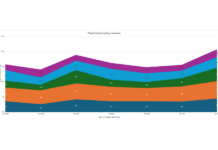Automated trading solutions have gone from being a tough sell to a requisite as firms seek to improve productivity.
However, the impact on performance can be hard to measure. A recent Bloomberg study suggests that automated fixed income trading outperforms manual workflows in specific circumstances.
“There are different ways to analyse the study data across the different asset classes, but we were trying to understand whether the productivity benefits from automating meant sacrificing performance,” Ravi Sawhney, global head of buy side execution services, told The DESK. “We looked at how often traders got priced back, how often dealers quit, and slippage. Across all these different measures we saw an improvement in execution performance when clients are using trade automation.”
The study follows a similar test in equities earlier this year, which came to the same conclusion.
Analysing 5.7 million anonymised trades from its electronic trading systems, Bloomberg found that those using its multi-asset automated trading solution Rule Builder (RBLD) broadly saw higher tickets, better prices and fewer no-quote responses from dealers. “It’s more pronounced in certain markets and certain sectors. In rates for example you will see better performance,” Sawhney noted.
There are multiple reasons for these results, he continued. “When a firm starts their automation journey, they have to codify what they’re doing manually. There can be variation across the desk—and across regions and clients—in terms of how they’re interacting with their dealers. By normalising your execution process and being more systematic around dealer selection including data led periodic reviews, you can focus on picking brokers who are more likely to respond.”
In US Treasuries and major sovereigns, Bloomberg found that those using RBLD had 2.8% and 4% fewer no-quotes from dealers respectively. In credit markets, there were 2% fewer no-quote responses and 3.6% more tickets were priced compared to non-RBLD trades.
Trade automation is of particular use to passive funds, Sawhney explained, where activity is moving increasingly to the close. “Previously there was a lot of manual activity up to that point to get everything ready, put it in, send it out, and manually respond to it. Now they can line everything up and send it out automatically, so they don’t have to worry about that type of flow.”
“The machine can be much more reactive to what’s going on in the market, for instance if economic data is released, if they programme it that way.”
However, in credit trading, the study reported that the number of tickets executed inside the Composite Bloomberg Bond Trader-mid dropped slightly (0.02%). “While there is benefit to systemising the trading processes, traders are better at sourcing liquidity for difficult orders in opaque markets,” Bloomberg concluded.
©Markets Media Europe 2024
©Markets Media Europe 2025

























